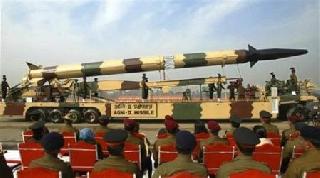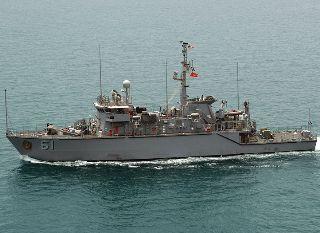
India's Agni missile system. A file photo
BANGALORE (PTI): India must focus on making missiles adaptable for all three armed services and reducing dependence on other countries for electronic missile components, Defence Minister's Scientific Advisor V K Saraswat has said.
"Besides focussing on making missiles adaptable for the services, dependence should be reduced on foreign countries for electronic components of missiles which are now imported as it is not cost effective to manufacture them here," he said at the fifth Air Chief Marshal L M Katre Memorial Lecture here Saturday.
Saraswat said India's recent successful Ballistic Missile Defence test, capable of intercepting and destroying incoming missiles, would challenge the South Asian strategic stability.
As there are diversification of threats and limited response options, BMD adds value to complexity of the region, he said.
India acquired BMD with technological aid of US and Israel. It has a two-tiered system - Prithvi Air Defence for high altitude interception and Advanced Air Defence for lower altitude interception. PAD missiles are for intercepting ballistic missiles at altitudes between 50-80 km and the Advanced Air Defence missile is for destroying them at heights ranging 15-30 km.
India’s future plans include two new anti-ballistic missiles that can intercept Inter Continental Ballistic Missiles -- Advanced Defence (AD-1 and AD-2) capable of intercepting and destroying a missile at a range of around 5,000 km, he said.
Saraswat, also DRDO Director General, said India is developing lasers and an exo-atmospheric kill vehicle (MIRV or Multiple Kill Vehicles) that can be combined to produce a weapon to destroy enemy satellites and that work is going on as part of ballistic missile defence programme by 2014.
Saraswat also highlighted the need to focus on miniaturisation for missiles.
On Unmanned Aerial Vehicles, which is going to be the mainstay of the Indian aerospace programme, he said "we need to build different kinds of payloads which are miniaturised".
"Having our own indigenous AWACS (Airborne Warning And Control Systems) is going to be the next step in our defence programme," Saraswat said.
Other programmes on the agenda include Unmanned Combat Aerial Vehicle which could be powered by indigenous Kaveri engine, nano techonology for aeronautical materials and solar- powered aircraft as we move towards "green aviation", he said.
The challenges India faces in developing future aerospace technologies are in human resources, design capability, infrastructure, material and sensor technologies and mission mode project management, he said.
"We need to work on technology assessment, go for limited acquisitions through offset programmes, have international collaborations with countries having complex skills and establish Centres of Excellence in core technologies", he said.
 Previous Article
Previous Article Next Article
Next Article












The Indian Air Force, in its flight trials evaluation report submitted before the Defence Ministry l..
view articleAn insight into the Medium Multi-Role Combat Aircraft competition...
view articleSky enthusiasts can now spot the International Space Station (ISS) commanded by Indian-American astr..
view article